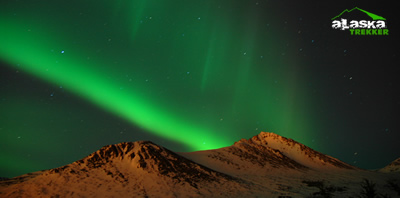Fairbanks Alaska
The Last Frontier – Great place to see the Aurora Borealis
The Interior, home of Fairbanks Alaska and Denali National Park, has some of the most extreme weather in the world with rapid temperature swings, thunderstorms with hail and lightning and snow in the summer. Fairbanks winters are very long, lasting from late September to mid-April. They are very cold and dry, with temperatures sometimes dipping down to -65 °F WITHOUT factoring in the windchill. Usually the temperature is below zero, almost for entire months.

Fairbanks Alaska History:
Before Fairbanks was founded, Koyukon Athabaskans lived, fished, and hunted along the shores of the Tanana River for thousands of years. The Tanana and other rivers also served as trade routes with other Athabaskans and Inuit.
Fairbanks was founded in 1902 as a trading post for gold miners developing the Interior fields. The city was a stopping place for warplanes traveling to Russian in the World War II Lend-Lease Plan. In the 1970s, Fairbanks boomed with the construction of the trans-Alaska oil pipeline, which passes just to the east of town.

Aurora Borealis / Northern Lights:
Fairbanks is one of the best spots on earth to see the Northern Lights. Beautiful and mysterious curtains, the colors range from green to red to purple, with the brightest and most common color, a yellow-green. Fairbanks sits under what is called the auroral oval, a ring-shaped region around the North Pole. Fairbanks Alaska location offers a great balance of occurrence, frequency and activity. Intensity varies from night to night, with the best viewing from late evening through the wee hours of the morning, late August to April.
Fairbanks Natives:
Alaska continues to be home to a diverse group of aboriginal people who first called the Last Frontier their home many thousands of years prior to the miners and merchants of the Gold Rush. The three main groups – Athabascan Indians, Eskimos and Aleuts – are collectively referred to as Alaska Natives. However, separately, they represent different cultures, languages and beliefs. Today, 90,000 Native people constitute 15% of Alaska’s population, living in remote villages as well as urban cities like Fairbanks. Athabascans are predominant in Alaska’s vast Interior and are known for their decorative beadwork, birch bark baskets, and skin sewed garments. Fairbanks is the host city to the Festival of Native Arts, the Athabascan Old-Time Fiddling Festival, the Midnight Sun Intertribal Powwow and the World Eskimo Indian Olympics where visitors can experience a part of Alaska’s rich Native culture.
For More information about Fairbanks:
Go to… explorefairbanks.com
Cool Video of Denali National Park
Flightseeing:
The nearest town to Mt. McKinley, Talkeetna offers stunning scenery, colorful people and healthy salmon runs with the accompanying bears! The town has traditionally been the gathering place for mountain climbers, gold miners and wilderness seekers for over 100 years.
Fairbanks Weather:
Winter brings consistent snow conditions from November through March to Fairbanks Alaska. Winter temperatures average 8°F to -19°F; summer temperatures rise into the 70s and 80s. Fewer clouds in Interior Alaska than elsewhere in the state means more warming by the sun during the long days of summer.
Location:
Located centrally in the heart of the state, Fairbanks is the gateway for travel to the Brooks Range and Arctic Coastal Plain and to communities such as Fort Yukon, Coldfoot, Bettles, Anaktuvuk Pass and Nome. The Arctic National Wildlife Refuge is easily accessible by small plane, and the famous Dalton Highway, also known as the North Slope Haul Road, can be traveled by those with a thirst for adventure.
Access:
Fairbanks Alaska is easily accessed by plane, rail or road. Daily jet service is available from many US cities and offers scheduled or charter service to Europe and Asia. Japan Airlines offers 3 direct winter flights, and Frankfurt-based Condor Airlines offers weekly direct flights during summer. The Alaska Railroad connects Fairbanks to Denali National Park, Anchorage, Whittier and Seward. The Alaska Highway offers road access via Canada, and the George Parks Highway links Fairbanks to Anchorage.
Accommodations:
There are approximately 3,300 rooms available in Fairbanks and the surrounding area.
